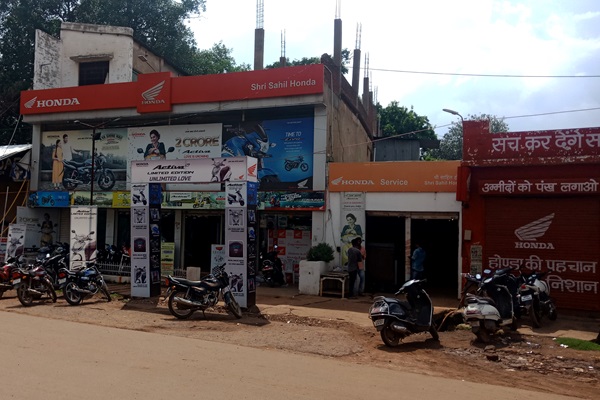.png)

Krishnadevan is Consulting Editor at BasisPoint Insight. He has worked in the equity markets, and been a journalist at ET, AFX News, Reuters TV and Cogencis.
April 8, 2025 at 10:34 AM IST
India’s auto dealers eked out a 6.5% rise in vehicle sales in 2024-25, but that growth masks a deeper stall. Behind the numbers lie ballooning inventories, tight financing, and fragile consumer demand. The new financial year opens not with a roar, but with a warning light.
The Federation of Automobile Dealers Associations is cautiously optimistic. The caution is justified. March ended the fiscal year on a high, with a 12% month-on-month jump in retail sales. Passenger vehicles climbed 16%, commercial vehicles rose 15%, and two-wheelers gained 11%—a trifecta that looked promising on paper.
Yet, the year-on-year picture tells a different story. Overall sales in March fell 0.7% from the previous year, a far more telling data point than the month’s momentum. Two-wheelers—still the backbone of India’s vehicle market—dropped nearly 2%, despite a February pickup. The much-hyped double-digit revival never showed up.
Commercial vehicles were flat for the financial year, slipping 0.2%. Passenger vehicles rose nearly 5% over 2023-24, which met expectations but failed to lift sentiment in showrooms.
Where did the growth come from? Not from premium buyers in metros, nor from fancy tech upgrades. It was rural India that did the heavy lifting. Two-wheeler sales in villages and small towns rose 8.4%, outpacing the 6.8% growth in urban centres. Passenger vehicle sales outside the cities grew 7.9%—more than double the 3.1% rise in urban areas. Tractors and three-wheelers followed a similar trend.
A good monsoon, better crop yields, and relatively stable cost-of-living pressures helped rural demand stay afloat. But rural resilience is not a foundation on which to build the future. Urban buyers drive margins, absorb premium models, and depend on financing. And that’s where the market is softening.
Dealer inventories for passenger vehicles are now in unsustainable territory—hovering between 50 and 55 days for many brands. Manufacturers continue to push ambitious dispatch targets that often ignore what’s actually selling. This isn’t just frustrating—it’s financially corrosive. Unsold stock ties up working capital and eats into dealer profitability. Add in regulatory price hikes and conservative lending practices, and the result is predictable: hesitant buyers, strained dealers, and sluggish conversion rates.
Financing remains one of the sector’s biggest chokepoints. Borrowing costs are high, credit norms are tight, and liquidity is patchy—particularly for lower-income customers. In a credit-fuelled industry like auto retail, these headwinds are hard to overcome.
So far, the start of 2025-26 hasn’t changed the narrative. Nearly 60% of dealers polled by FADA reported weak booking pipelines. Almost half expect flat sales in April, while 15% foresee a decline. Local festivals and wedding season may offer a temporary lift, but the broader mood is subdued. Heatwaves could sap showroom traffic. Renewed global trade tensions may rattle equities and dent high-end urban demand, where the wealth effect plays a big role in purchase decisions.
The medium-term forecast is tepid at best. FADA expects mid-to-high single-digit growth in two-wheelers this year, and low single-digit gains in both passenger and commercial vehicles. That’s not a comeback—that’s treading water.
New model launches and the continued rise of electric vehicles might offer some spark. A good monsoon could once again prop up rural sales. But these are optimistic bets, not baselines. The fundamentals—inventory imbalances, credit constraints, and unrealistic sales targets—remain unaddressed.
Unless these structural issues are resolved, the sector may continue limping forward, powered more by festival spikes than by genuine demand. The dashboard may show green, but the engine’s still struggling.




